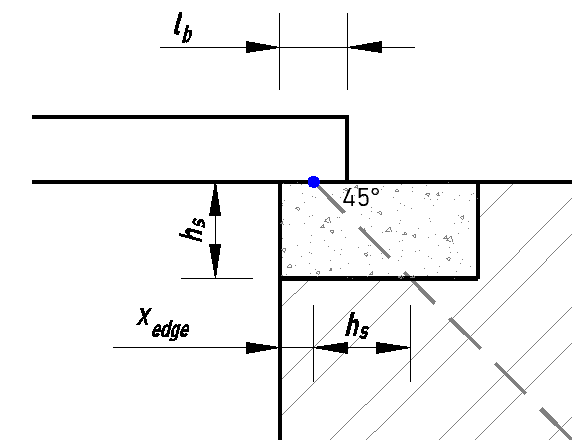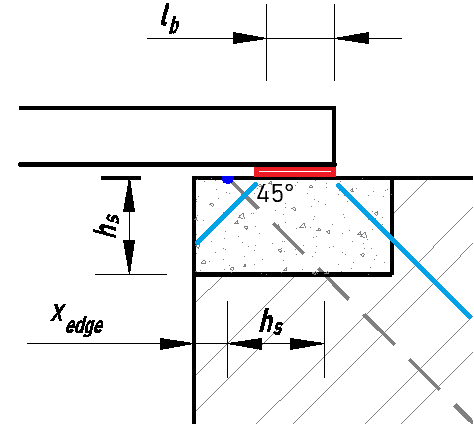Aiden Wilkins
Structural
- Oct 6, 2022
- 2
Hi all,
I have a question regarding structural design (I am doing it to BS 5628) of concrete padstones - primarily in this case where they are close to or right at the end of the wall.
In this example case, I have a beam 100mm wide bearing on the end of a wall:

I require the load to be spread more than it will be without a padstone and so I am putting one in. Until now I have been using Tedds but am now questioning it. The formula they use basically just multiplies the stress at the base of the beam by 2/3 - I am not sure why this is but it does not seem right/a good way of doing this.
I have made a preliminary calc that basically just uses triangular stress distribution to obtain the stress at the bottom of the padstone after taking a 45 degree line but I would like to know how others do it so that I can have a better idea of the best way to go about this.
Cheers,
Aiden.
I have a question regarding structural design (I am doing it to BS 5628) of concrete padstones - primarily in this case where they are close to or right at the end of the wall.
In this example case, I have a beam 100mm wide bearing on the end of a wall:

I require the load to be spread more than it will be without a padstone and so I am putting one in. Until now I have been using Tedds but am now questioning it. The formula they use basically just multiplies the stress at the base of the beam by 2/3 - I am not sure why this is but it does not seem right/a good way of doing this.
I have made a preliminary calc that basically just uses triangular stress distribution to obtain the stress at the bottom of the padstone after taking a 45 degree line but I would like to know how others do it so that I can have a better idea of the best way to go about this.
Cheers,
Aiden.

